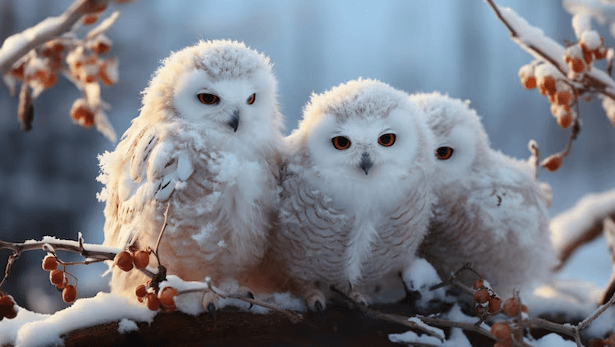Baby:4vgh1kdm9f0= Snowy Owl

The life cycle of the Baby:4vgh1kdm9f0= Snowy Owl begins with the hatching of a vulnerable chick, characterized by its soft, white down feathers that provide insulation in harsh conditions. As it grows, this young owl must navigate the complexities of its environment, learning vital skills for survival, particularly in hunting and foraging. The transition from a dependent nestling to an independent predator is fraught with challenges that ultimately shape its future. However, the journey of these owlets is not merely a tale of survival; it also raises critical questions about their habitat and the factors influencing their conservation.
Life Cycle of Snowy Owls
Understanding the life cycle of snowy owls involves observing their distinct developmental stages, from hatching to maturity.
Breeding behaviors initiate this cycle, as adults select nesting sites and lay eggs. Following hatching, juvenile development progresses as the chicks grow rapidly, learning essential survival skills.
Their transition from dependent nestlings to independent hunters encapsulates the intricate balance of growth, adaptation, and the wild’s challenges.
Habitat and Nesting Sites
The snowy owl’s preferred habitat is characterized by vast open landscapes, including tundra, grasslands, and coastal regions.
Their breeding behavior often takes place on elevated sites, such as cliffs or mounds, which provide visibility and protection.
Roosting preferences include flat, unobstructed areas where they can survey their surroundings, ensuring both safety and strategic vantage points for spotting potential prey in their expansive territory.
Read Also Aesthetic:2oqhm3wwmfq= Melanie Martinez

Diet and Hunting Techniques
Snowy owls are highly adaptable predators, primarily feeding on small mammals, particularly lemmings, which constitute a significant portion of their diet.
Their prey preferences reflect a reliance on local abundance, while their hunting strategies include both active pursuit and opportunistic ambush.
This flexibility allows snowy owls to thrive in various environments, showcasing their ability to balance energy efficiency with successful predation.
Conservation Status and Challenges
Conservation efforts for the snowy owl face significant challenges due to a combination of habitat loss, climate change, and shifting prey availability.
As temperatures rise and ecosystems shift, the snowy owl’s breeding and feeding grounds are increasingly compromised.
These climate impacts necessitate urgent intervention to protect this iconic species, emphasizing the need for adaptive management strategies that address both immediate threats and long-term sustainability.
Conclusion
The growth and development of Baby:4vgh1kdm9f0= Snowy Owl exemplify the intricate relationship between species and their environment. Like a sculptor chiseling away at stone, the young owls refine their skills through experience, transitioning from dependence to independence. This critical juvenile phase not only shapes their survival abilities but also underscores the importance of conservation efforts to ensure their future in rapidly changing habitats. Sustaining healthy populations of Snowy Owls remains essential for maintaining ecological balance within their ecosystems.




